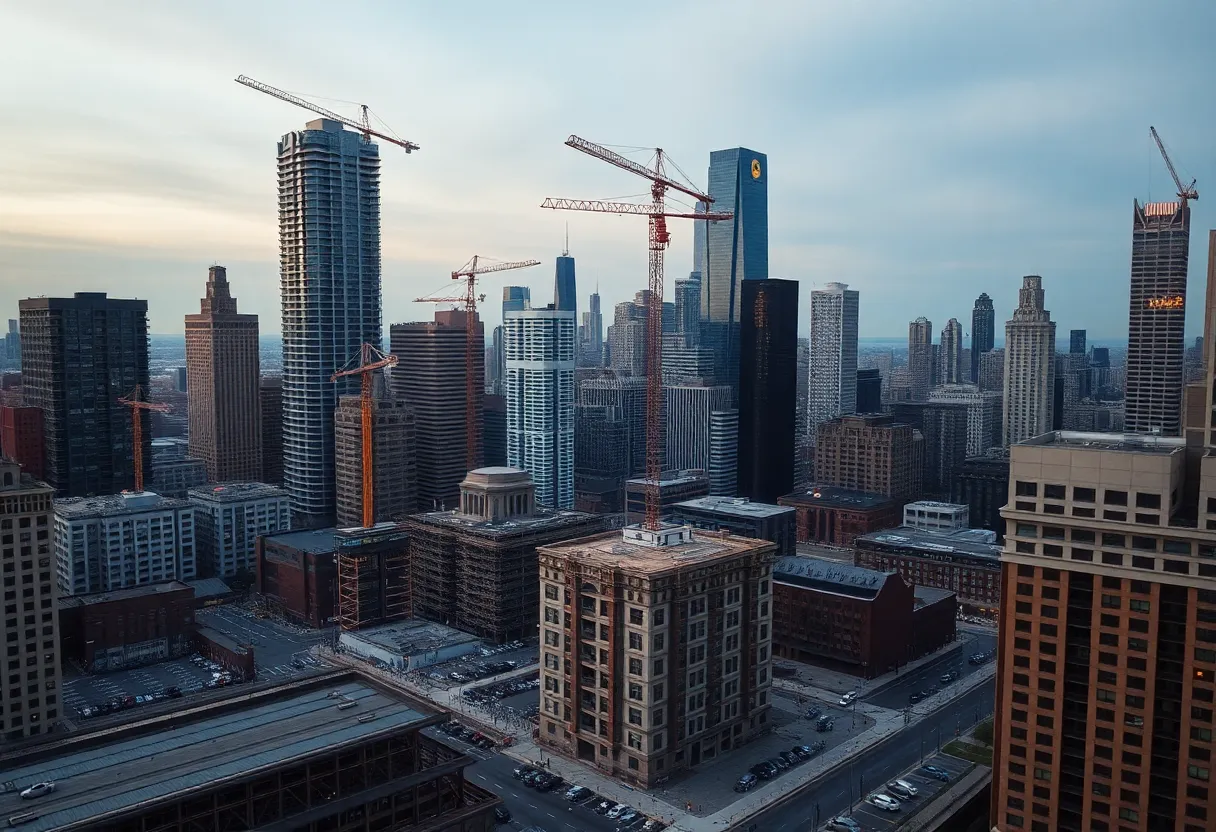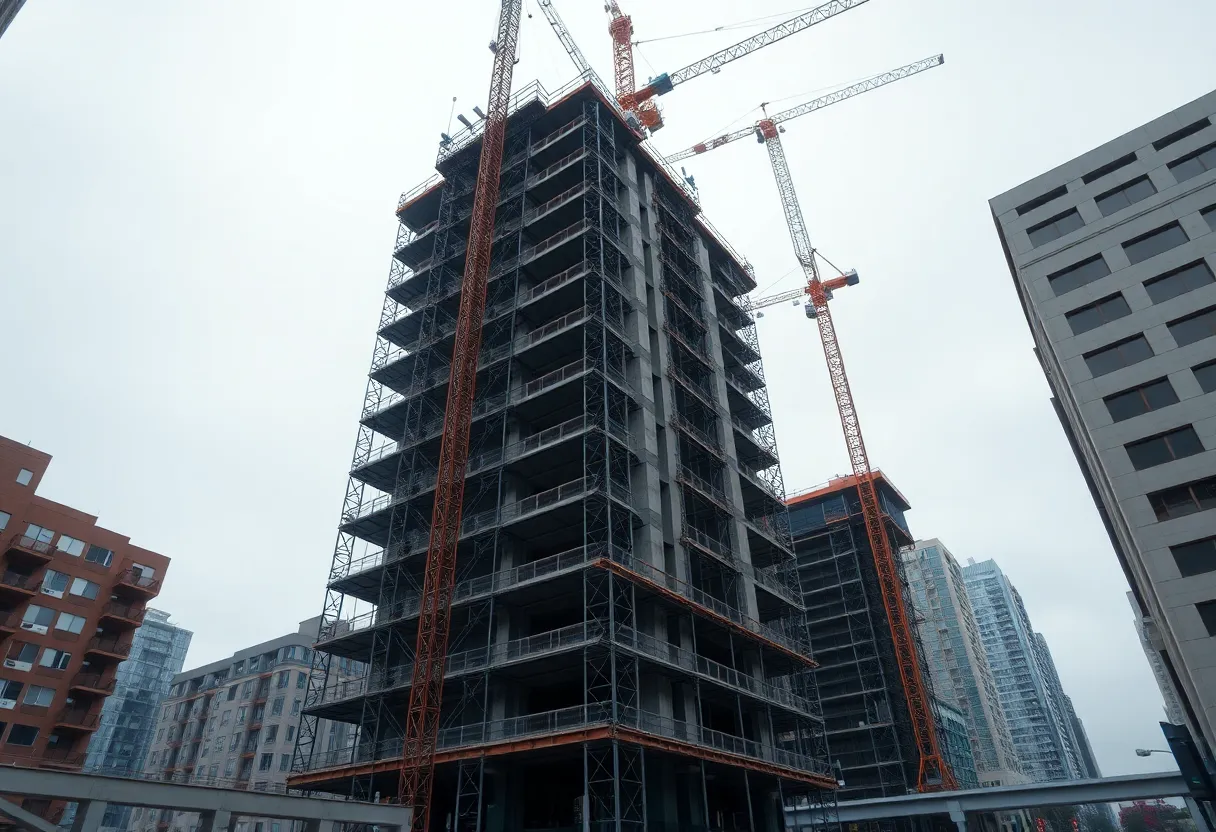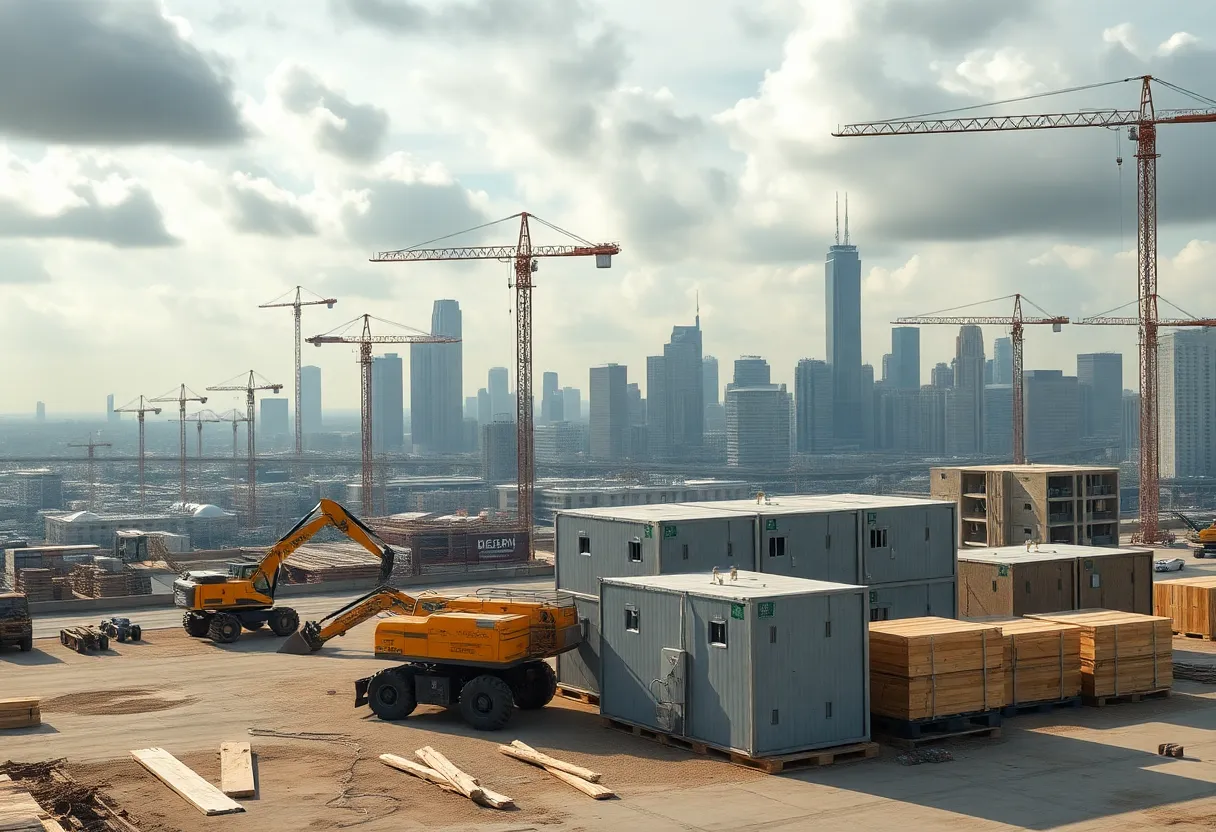Chicago metro, September 2, 2025
News Summary
New apartment starts across the Chicago metro plunged sharply as rising construction and insurance costs, higher labor expenses and tighter lending undercut the post-pandemic building boom. The region saw a steep year-over-year decline that pushed it down national rankings and shifted growth toward other metros. Roughly a third of the limited new units remain inside the city, while large projects pivoted from condos to rentals and small infill permits continue in neighborhoods. Local policy changes removing parking minimums near transit aim to reduce costs and encourage denser development, even as builders prioritize amenities tied to mobility and wellness.
The Chicago area is facing a sharp slowdown in new apartment construction in 2025, with a
60.4% drop compared with 2024. The year is expected to bring roughly 3,756 new units, a figure that underscores a broader development squeeze across the metro. Of these units, about 1,371 — or 36% — are projected to come online in the City of Chicago, with the balance spread through the suburbs. The pullback follows a burst of permits in 2021–2022 and far fewer groundbreaking projects in 2023–2024, reflecting higher labor and material costs, steeper insurance premiums, and tighter lending standards that together dampen new construction.
The shift places Chicagoland well behind many other markets in the nation. The metro slipped to 33rd place nationally for new rental apartment development in 2025 and sits fifth regionally in the Midwest, trailing Columbus by roughly 3,000 units. Across the country, the South now accounts for more than half of expected 2025 apartment starts, with the New York metropolitan area continuing to lead annual openings. The regional mix highlights how, even as overall demand remains, supply growth moves toward markets with different cost structures and policy environments.
A companion lens on renters’ priorities shows the top amenities sought are reserved or covered parking and fitness centers, with growing interest in coworking spaces, club rooms, spa features, and rooftop amenities. The combination of elevated construction costs, tightening credit, and shifting demand patterns helps explain why a major Chicago project once flirted with condominium sales but ultimately proceeded as rental housing to capture faster timelines and more certain post-pandemic demand dynamics.
Case study: a notable high-rise and its evolution
A prominent high-rise on Michigan Avenue built as a rental tower represents a case of how developers navigate a choppy funding and design environment. The project contains approximately 738 rental units and stands around 805 feet tall. After opening to renters last spring, the building embodies a pivot from condo sales to long-term leasing, a move driven by pandemic-era construction pauses, financing shifts, and market feedback. The design emphasizes light, openness, and wellness, and includes energy-efficient systems, on-site bicycle storage, charging stations, and a fitness and wellness complex. The project has been recognized with an industry award for multifamily development in the city, reflecting its role as a centerpiece in the local housing landscape.
Financing and structure evolved during construction. Early commitments to finance the project at the outset of the pandemic faced reductions and delays, prompting a pivot to a rental-focused strategy. The project leveraged a mix of debt and equity and introduced tax-advantaged structures to attract investors seeking steadier, long-term returns. The site was tailored to integrate with nearby cultural and commercial anchors, and adjustments to the historic district helped enable the tower’s height and footprint, aligning zoning with a contemporary urban housing vision. The leasing strategy emphasizes mid-to-upper tier renters, while marketing materials highlight mobility, light-filled interiors, and sustainable living.
Permitting activity nearby: a ground-floor project in Noble Square
On a street corner near Eckhart Park, a five-unit residential project has received construction permits for a four-story building without a basement. The site, currently vacant, will house five dwelling units on the upper floors and a single 807-square-foot ground-floor retail space, plus the residents’ entrance. A rear setback variation reduces the previously required distance from 30 feet to 3 feet for the residential portion, enabling a more compact footprint. The plan includes two covered parking spaces at grade and five bicycle spaces inside the building, with additional resources such as a ground-level garbage enclosure and performance-ready access from the street and alley. The project team includes an architectural firm of record and a general contractor ready to begin construction, with no demolition permit needed since the site is vacant. Transit accessibility is a feature, with nearby bus routes and rail lines offering convenient connections to the city’s core and nearby neighborhoods.
Local zoning moves: parking minimum reform near transit
In mid-year actions, the city council moved to eliminate parking minimums for new developments within a defined radius of transit access. The policy eliminates city parking minimum requirements for projects within a half mile of a major rail line or within a quarter mile of a bus line. The reform aligns with broader efforts to reduce zoning barriers that hinder housing production and to promote more compact, transit-oriented development. Local input and community meetings frequently accompany zoning changes, and ward-level adjustments can shape the pace and scale of new housing. The overall aim is to unlock more housing supply in the near term while continuing to weigh parking and mobility trade-offs in dense urban areas.
The policy context notes that most apartment buildings historically feature parking facilities that may not match the latest standards for density and livability, a factor developers weigh as they plan new projects that emphasize walkability, transit access, and shared mobility options.
Implications for Chicago’s development landscape
Taken together, the 2025 market signals, permit activity, a high-profile high-rise rental pivot, and the city’s parking reform point to ongoing development pressure in Chicago even as costs rise and project timelines tighten. The region remains a magnet for residents seeking urban living with access to culture, employment, and amenities, while the policy environment shifts toward more flexible approaches to parking and density. Stakeholders across construction, finance, and planning continue to weigh how to sustain housing production amid elevated costs, evolving financing, and a more networked approach to mobility and public transit.
FAQ
What is the scale of the 2025 decline in new Chicago-area apartment construction?
The year shows a substantial reduction in new units, with a measured decline of around 60% year over year, translating to a projected total in the mid-thousands range for 2025.
How many new apartment units are expected in Chicagoland in 2025, and how are they distributed?
An estimated 3,756 units are expected for 2025, with roughly 36% located within the City of Chicago and the remainder distributed in suburban areas.
What is notable about the 1000M high-rise development?
The project is a large rental tower on a major avenue, featuring hundreds of units, a substantial height, and a pivot from condo development to rental housing amid financing and pandemic-related challenges. It emphasizes light, wellness, and sustainability and has been recognized with an industry award for its impact in the city.
What did the local permit at 1361 West Chicago Avenue involve?
The project calls for five dwelling units across four stories, ground-level retail space, a reduced rear setback, two ground-level parking spaces, and five indoor bicycle spaces. It is located near Eckhart Park and benefits from nearby transit access, with no demolition required due to vacant land prior to construction.
What does the parking-minimum reform entail?
The reform eliminates parking minimum requirements for new developments within defined distances of transit lines, aiming to reduce zoning barriers and accelerate housing production while maintaining mobility considerations for residents.
How does the broader regional context affect Chicago’s housing market?
Chicago sits in a Midwest region that is generating a smaller share of new apartment construction relative to the South and New York metro, with costs, lending standards, and demand patterns shaping where and how new housing is built across the year.
Key features at a glance
Feature
Description
2025 market trend
Sharp slowdown in new apartment construction across Chicagoland with a 60.4% year-over-year drop.
Total projected units
Approximately 3,756 new units planned for 2025, with about 36% in the City of Chicago.
City vs. suburbs
City share around 1,371 units; the rest spread across suburban areas.
Major case study
A large high-rise on Michigan Avenue with 738 units, about 805 feet tall, opened to renters recently, pivoting from condos to rental housing.
Permitting activity
A five-unit project at 1361 W Chicago Ave secured a permit for a four-story structure with ground-floor retail and a rear setback reduction.
Parking reform
City-wide removal of parking minimums within defined proximity to transit to streamline housing development.
Regional context
Midwest ranks fifth in the region for new apartment starts; the South leads nationwide in 2025 starts.
Deeper Dive: News & Info About This Topic
Additional Resources
- Chicago YIMBY: Five residential units, one commercial unit permitted at 1361 West Chicago Avenue
- Wikipedia: 1361 West Chicago Avenue
- Bloomberg: Chicago zoning reform targets parking rules to boost housing
- Google Search: Chicago zoning reform parking minimums 2025
- CoStar: Apartment tower clears obstacles to 73-story tower over Grant Park
- Google Scholar: Grant Park apartment tower 73 stories 2025
- Bisnow: The convoluted start-stop process that birthed $1000M Chicago apartment tower
- Encyclopedia Britannica: 1000M Chicago apartment tower
- WTTW: Developer moves forward on Lincoln Park apartment complex
- Google News: Lincoln Park apartment complex developer 2025





